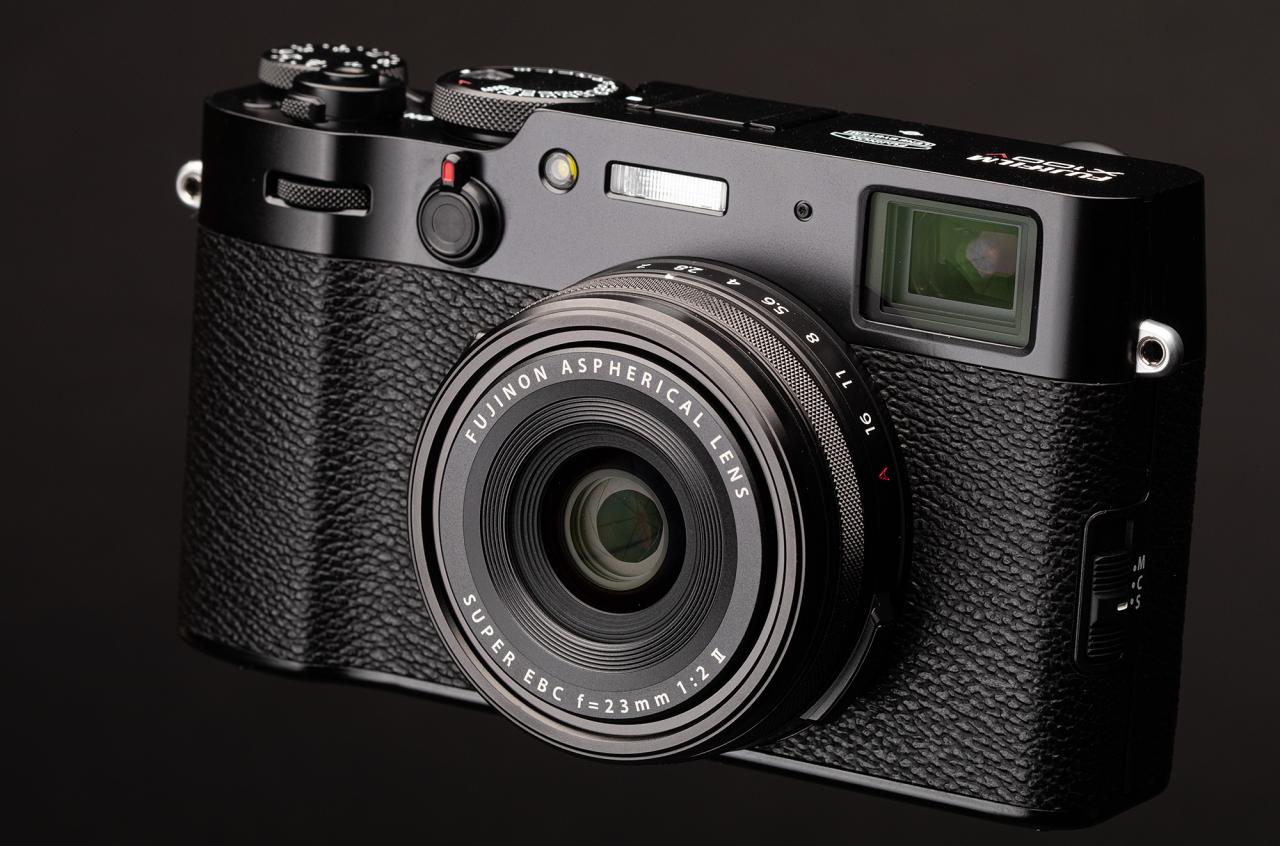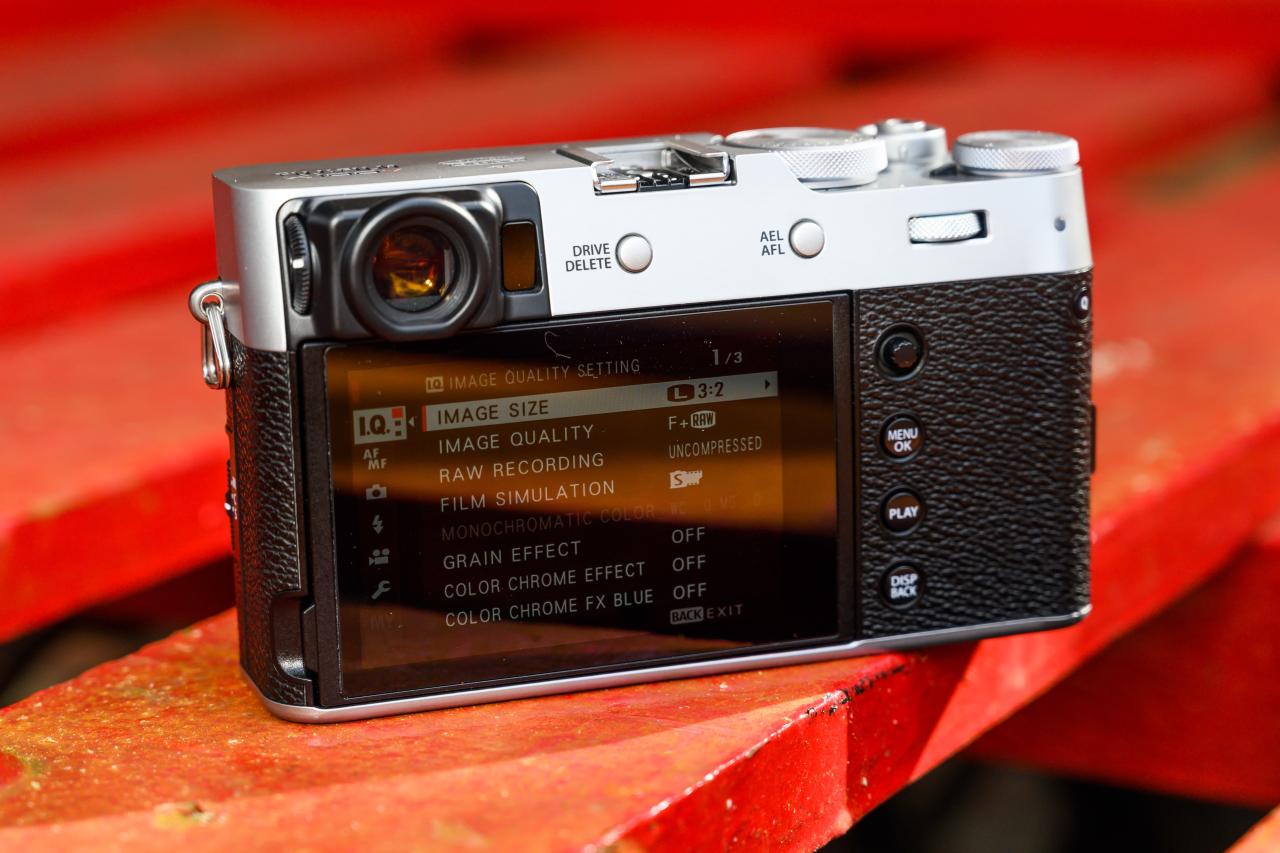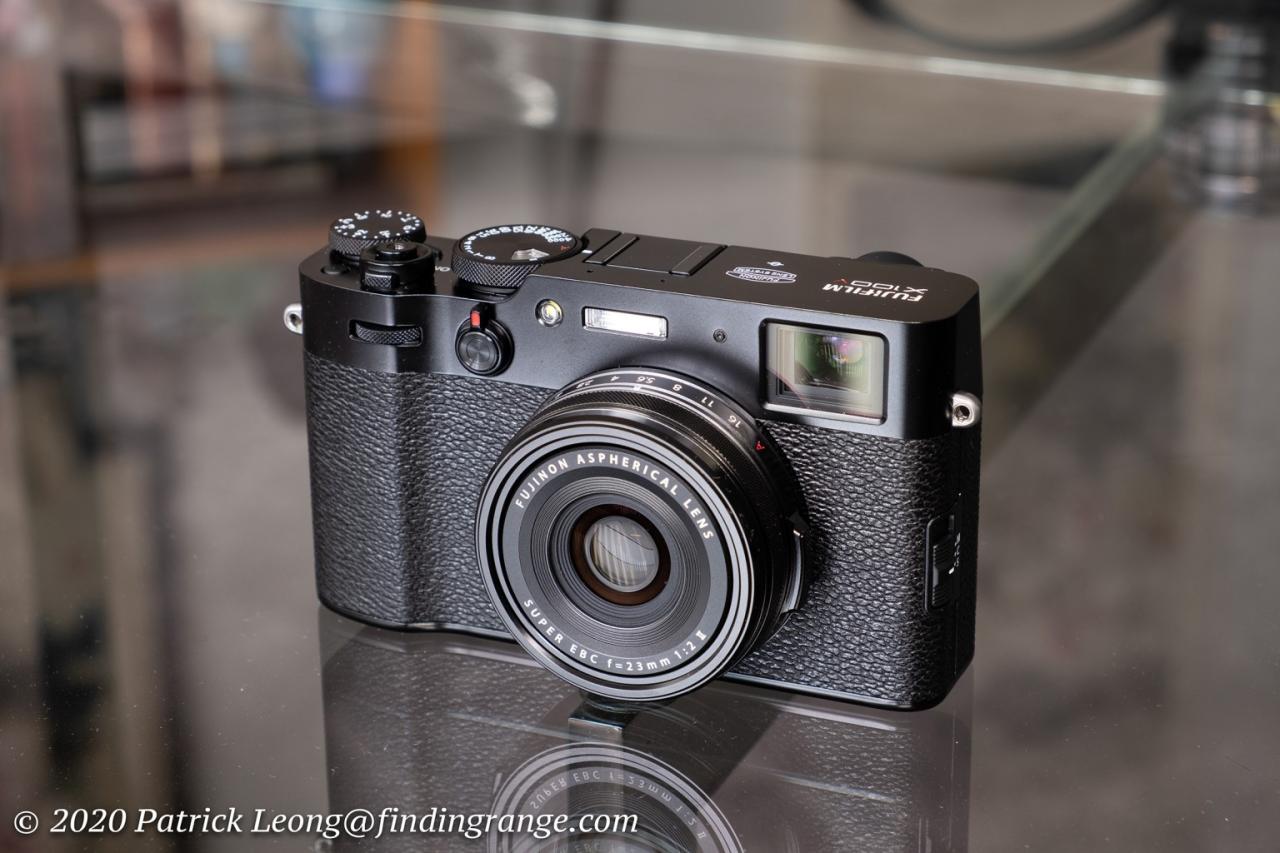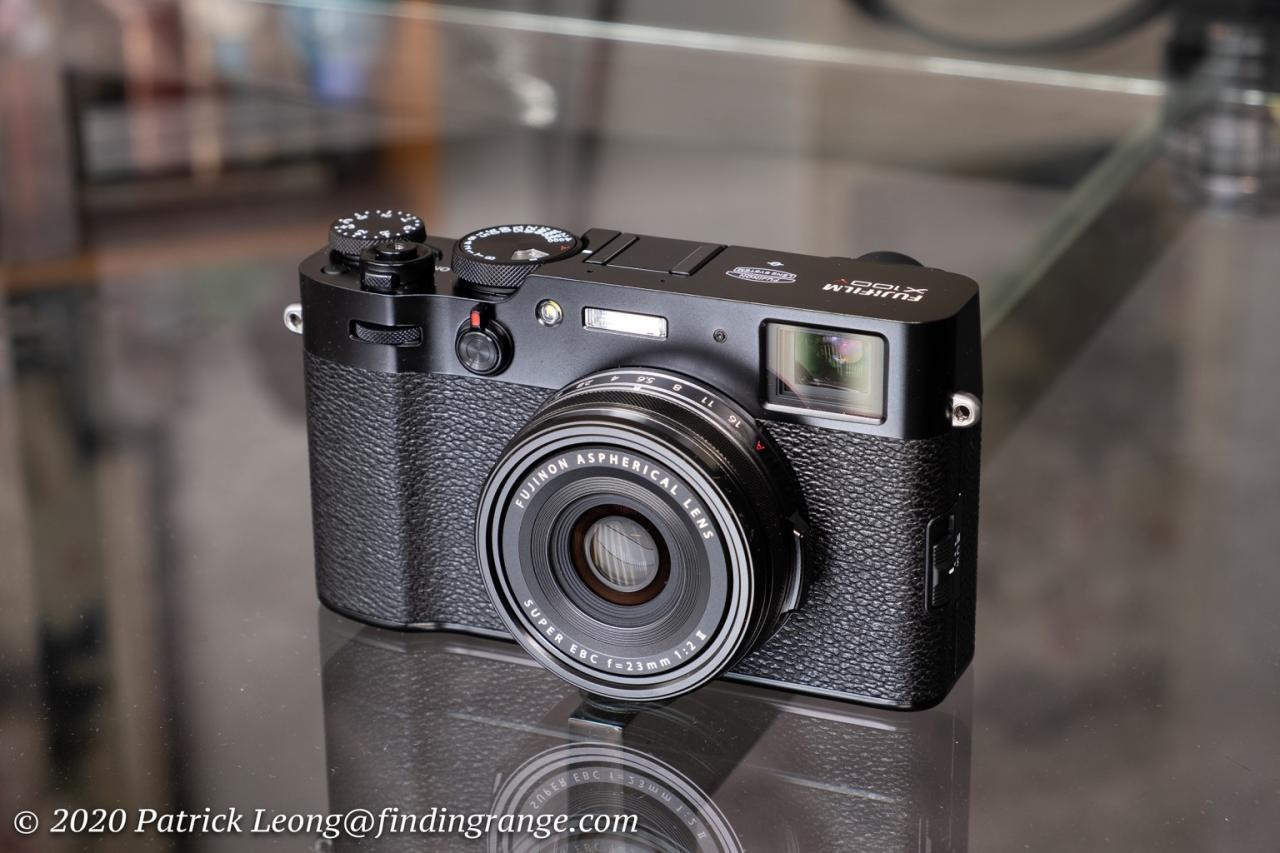Fujifilm X100V: This iconic compact camera seamlessly blends retro aesthetics with cutting-edge technology. Its fixed 23mm f/2 lens, renowned for its exceptional image quality, makes it a compelling choice for photographers seeking a versatile and portable system. This review delves into the X100V’s key features, performance, and overall user experience, offering a detailed analysis for both prospective buyers and seasoned enthusiasts.
From its refined ergonomics and intuitive interface to its impressive image rendering capabilities and extensive film simulations, the X100V caters to a diverse range of photographic styles. We’ll explore its strengths and weaknesses, comparing it to competitors and ultimately assessing its position within the current landscape of premium compact cameras. Expect a thorough examination of its real-world applications and a clear understanding of who might benefit most from owning this remarkable device.
Fujifilm X100V: A Deep Dive into its Features and Capabilities

The Fujifilm X100V has solidified its place as a highly-regarded compact camera, appealing to both seasoned photographers and enthusiastic newcomers. Its blend of retro aesthetics, advanced technology, and exceptional image quality makes it a compelling choice in a crowded market. This detailed analysis explores the X100V’s key features, performance, and overall user experience.
Fujifilm X100V Camera Overview
The X100V boasts a 26.1MP X-Trans CMOS 4 sensor, renowned for its exceptional detail and dynamic range. This sensor, coupled with the advanced X-Processor 4, delivers impressive image quality even in challenging lighting conditions. The camera’s iconic design, featuring a classic rangefinder-style body, is both aesthetically pleasing and ergonomically sound. The addition of a tilting touchscreen significantly enhances usability and composition flexibility.
| Manufacturer | Model | Sensor Size | Weight (approx.) |
|---|---|---|---|
| Fujifilm | X100 | APS-C | 473g |
| Fujifilm | X100S | APS-C | 473g |
| Fujifilm | X100T | APS-C | 478g |
| Fujifilm | X100V | APS-C | 497g |
The X-Trans CMOS 4 sensor in the X100V is particularly adept at capturing fine details and minimizing moiré artifacts, a common issue with traditional Bayer sensors. Its high dynamic range allows for greater flexibility in post-processing, enabling recovery of details in both highlights and shadows.
Lens Performance and Image Characteristics
The X100V’s 23mm f/2 lens (35mm equivalent) is a marvel of compact lens engineering. Its performance is consistently impressive across various apertures and shooting situations. At wider apertures, it renders pleasing bokeh, while stopping down provides excellent sharpness and detail even in the corners of the frame.
For example, a portrait shot at f/2 would showcase a creamy, shallow depth of field, beautifully blurring the background and drawing attention to the subject. Conversely, a landscape image captured at f/8 would exhibit exceptional sharpness and detail from foreground to background, capturing the intricate textures of the scene. The lens’s ability to perform well in low-light conditions is another notable strength, producing images with minimal noise even at higher ISO settings.
Fujifilm’s renowned film simulations add a unique artistic dimension to the X100V’s image capabilities. These simulations emulate the look and feel of classic film stocks, offering a wide range of aesthetic choices.
- Classic Chrome: A muted, slightly desaturated look with subtle color shifts, evoking a vintage feel.
- Provia/Standard: A faithful reproduction of colors, providing a balanced and natural look.
- Velvia: Vibrant and saturated colors, ideal for landscapes and scenes with strong colors.
- Astia: Soft and smooth tones with a delicate rendering of skin tones, well-suited for portraits.
- Eterna: A cinematic look with muted colors and low contrast, perfect for creating a moody atmosphere.
User Experience and Functionality

The X100V’s user interface is intuitive and well-designed, catering to both beginners and experienced photographers. Its physical controls provide a satisfying tactile experience, while the tilting touchscreen adds a modern touch for easy navigation and composition adjustments.
Using manual focus is straightforward. First, select the MF mode via the dial. Then, rotate the focus ring on the lens to adjust focus. The focus peaking function is a helpful aid, highlighting areas in focus on the LCD screen. The camera also offers a digital split-image focus assist.
| Camera Model | Ease of Use | Manual Controls | Image Stabilization |
|---|---|---|---|
| Fujifilm X100V | Excellent, intuitive interface and physical controls | Extensive and customizable | In-body image stabilization |
| Sony RX1R II | Good, but some menu navigation can be complex | Comprehensive | No image stabilization |
| Ricoh GR III | Very good, simple and straightforward | Limited, but sufficient | No image stabilization |
Compared to similar cameras, the X100V offers a superior blend of ease of use and extensive manual controls.
Real-World Applications and Photography Styles

The X100V’s fixed 35mm equivalent lens and compact form factor make it ideally suited for street photography, capturing candid moments and environmental details. Its image quality and versatility also extend to landscape and portrait photography. The ability to quickly adjust settings and compose shots is critical in street photography.
Imagine a bustling city street scene. Using the X100V, a photographer could quickly switch to aperture priority mode (Av), selecting a wide aperture (f/2) to isolate a subject against a blurred background. The tilting screen allows for low-angle shots or shooting from above the crowd. The film simulation “Classic Chrome” could add a vintage, documentary-like feel to the image.
A portrait shot might utilize the “Astia” film simulation for soft, natural skin tones and a shallow depth of field to draw attention to the subject’s expression.
A landscape shot could leverage the camera’s excellent dynamic range and sharpness to capture a vibrant sunset, while a candid street portrait might utilize the camera’s quick autofocus and responsiveness to capture a fleeting moment.
Comparison with Competitors
The X100V faces competition from other high-end compact cameras. Its key differentiators include its unique design, excellent image quality, and Fujifilm’s renowned film simulations. However, it lacks in-body image stabilization which is a feature found in some competitors.
The Fujifilm X100V’s compact size makes it ideal for street photography, capturing candid moments with its exceptional image quality. Thinking about the scale of things, it’s interesting to contrast this with the sheer logistical challenge presented by something like remington drone loads , which require meticulous planning and coordination. Returning to the X100V, its intuitive controls allow for quick adjustments, ensuring you never miss a shot.
| Camera Model | Price (approx.) | Key Features | Overall Score |
|---|---|---|---|
| Fujifilm X100V | $1399 | Retro design, excellent image quality, film simulations, tilting screen | 9.0 |
| Sony RX1R II | $3500 | Full-frame sensor, exceptional image quality, no video recording | 8.5 |
| Ricoh GR III | $899 | Compact size, excellent image quality, fast autofocus | 8.8 |
The X100V targets photographers who value image quality, classic design, and ease of use. The Sony RX1R II appeals to those prioritizing ultimate image quality, while the Ricoh GR III is a more affordable option for those focusing on portability and simplicity.
The Fujifilm X100V, with its exceptional image quality, is a fantastic camera for capturing everyday moments. Its compact size makes it ideal for street photography, unlike the large, potentially intrusive drones involved in the recent incident where a drone was shot down in New Jersey, as reported here: nj drone shot down. The X100V’s discreet nature offers a stark contrast to the more visible presence of drones, highlighting its versatility for capturing candid shots without drawing undue attention.
The Fujifilm X100V ultimately proves to be more than just a camera; it’s a statement. Its blend of classic design, exceptional image quality, and intuitive functionality makes it a compelling option for photographers of all levels. While it may not be the perfect all-around tool, its strengths in street photography, portraiture, and everyday snapshots are undeniable. The X100V offers a rewarding photographic experience, encouraging creativity and fostering a connection with the art of image making that extends beyond mere technical specifications.
Questions Often Asked
What is the battery life like on the Fujifilm X100V?
Battery life is generally considered average for a compact camera of this type. Expect to get around 350 shots per charge, depending on usage.
Does the Fujifilm X100V have image stabilization?
No, the X100V lacks in-body image stabilization (IBIS). However, the lens’s relatively fast aperture helps compensate for this.
Can I shoot video with the Fujifilm X100V?
Yes, the X100V can shoot 4K video at 30fps, and 1080p at various frame rates. Video quality is generally good, but not its primary strength.
Is the Fujifilm X100V weather-sealed?
No, the Fujifilm X100V is not weather-sealed. Using it in challenging weather conditions should be avoided.
